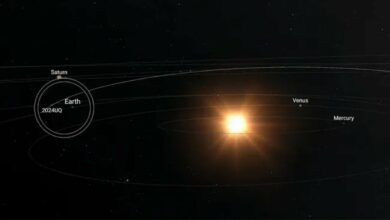First nuclear clock could reveal changes in fundamental constants

A major breakthrough in atomic physics occurred with the development of the first nuclear clock. This clock, based on the thorium-229 nucleus, has achieved a level of precision that can help test whether the fundamental constants of physics change over time. This remarkable advance was achieved by a research team led by Jun Ye, a leading physicist at JILA, Boulder, Colorado.
The discovery
On a remarkable evening in May 2024, graduate student Chuankun Zhang at JILA discovered a long-awaited signal from the thorium-229 nucleus, marking a pivotal moment in the quest for a nuclear clock. The signal, which shows the nucleus switching between two states, was celebrated by Zhang and his labmates after rigorous verification. Jun Ye, known for his work in creating the world’s most accurate atomic clock, was moved to tears when he saw the results.
Meaning of the nuclear clock
The unique properties of the thorium-229 nucleus allow it to be exceptionally sensitive to variations in the fundamental constants of nature. These constants, such as the speed of light and the gravitational constant, are fundamental to our understanding of the universe. The precise measurement of the thorium-229 transition, which is a million times more accurate than previous attempts, could reveal whether these constants change over time.
Scientific context
The discovery of the thorium-229 nuclear clock is rooted in previous research. In the 1970s, scientists discovered the unusual nuclear state of thorium-229, which required less energy to excite compared to other nuclei. This property made it an excellent candidate for a highly sensitive clock that could probe the stability of fundamental constants.
Future implications
This breakthrough opens up new avenues for exploring fundamental physics. Researchers including Eric Hudson of the University of California, Los Angeles, and Hannah Williams of Durham University have noted that the precision of the thorium-229 nuclear clock could eventually allow scientists to detect subtle changes in the laws of physics that were previously undetectable.




